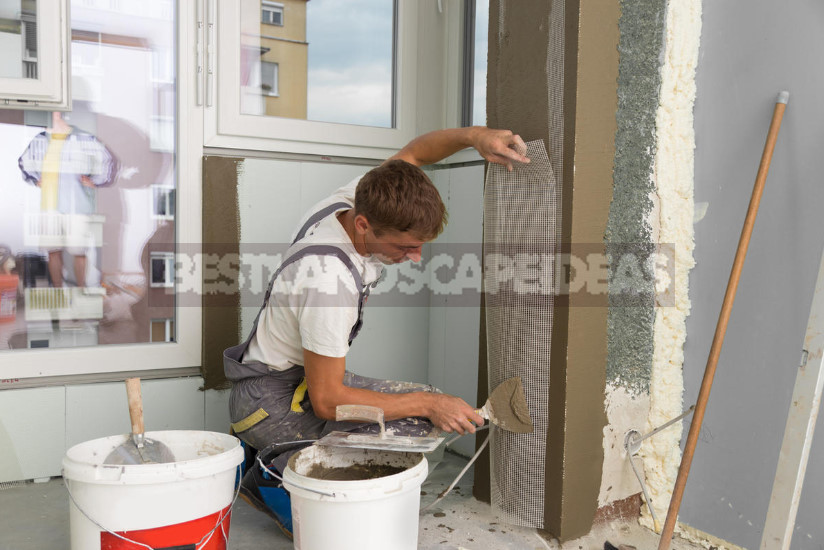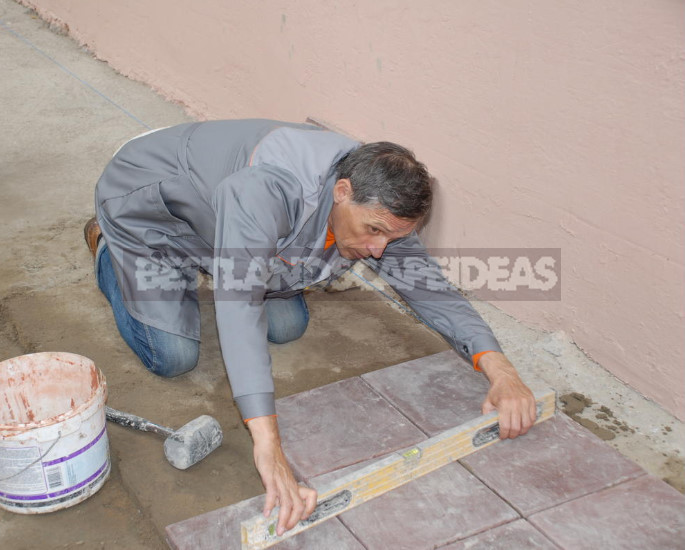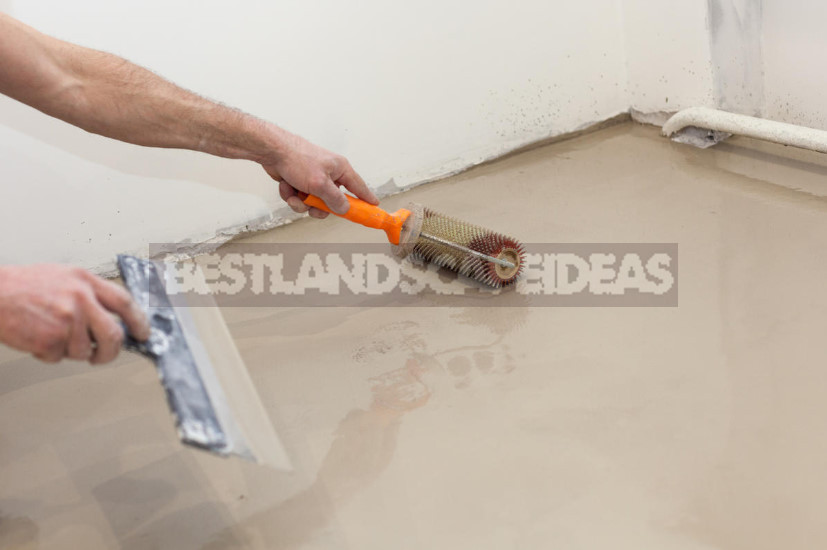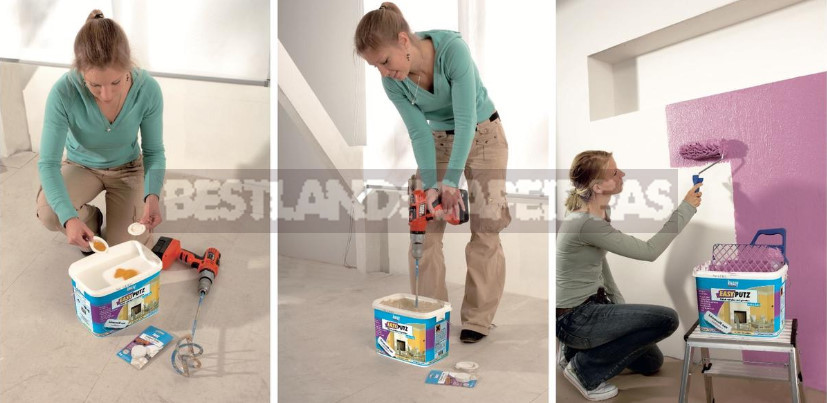
Dry mixes have been successfully used in ancient times. “Grandparents” they were famous to all builders with experience. They are now often used at distant sites. It is a ready mix of cement and sand of different fractions. She could be both homemade and pre-cooked at the factory.
Now, in the production of this type of material can not be any Amateur. On the contrary, a whole sub – industry has been created, which produces several million tons of products per year.

To figuratively “feel” this volume, imagine a huge freight train, fully loaded with bulk material.
What’s in the package
Today, any dry construction mixture has 3 main components:
- binder,
- filler,
- modifying additives that are strictly dosed according to the factory recipe.
Each structure is intended for performance of a certain type of construction works. Dry mixes are used for masonry mortars, tile adhesives, floor levelers, waterproofing compounds, fillings, plasters and special compositions.

Cement, lime, gypsum and sometimes their combinations can be used as a binder. The most commonly used cement or rapid-hardening Portland cement.
Fillers are a variety of materials: quartz sand, mineral or organic fibers, ground limestone, marble chips. Grain size varies depending on the purpose of the mixture:
- in compositions that can be applied fairly thick layer, large grains;
- in adhesives and plasters-medium size (about 0.6 mm);
- in smooth solutions, fillings, the maximum allowable grain size should be about 0.1 mm.

Modifying agent
The low volume, but determining the component value of all the finished mixes, modifying additives. In the Middle ages all sorts of organic matter was added to masonry mortars: chicken eggs, dairy products, herbal decoctions, vegetable oil and even animal blood. So the solution was easier to fit, and the masonry was stronger.
In fact, it was the first modifying additives. They had to go a long way of development to eventually become a major component of dry mixes.
Modifying additives determine the most important properties of the mixture and allow them to change over a wide range. They can:
- accelerate or slow down the curing process,
- to increase the porosity, frost resistance,
- to improve the workability,
- reduce the amount of moisture required for mixing.
The last property-reducing the amount of water — largely caused the popularity of dry mixes. The fact that the effective hydration of cement requires a strictly defined amount of moisture. But it is, unfortunately, often evaporates from the solution surface or goes to the wall base, with the result that not the whole mass of cement react with water. The above should motivate summer residents to accurate, meticulous dosing of all components to obtain high-quality kneading, no matter what the final product they are preparing.
Water-retaining additives
At the beginning of the last century, the first water — retaining additives-water-soluble cellulose esters were made. This polymer has a fantastic ability to retain moisture. In the compound, methylcellulose forms a homogeneous gel in which the particles of cement and sand are suspended. Water is securely held in the solution for a long time, so that the hydration process is most complete and evenly throughout the volume, and the cement stone is very strong, even if the solution is applied in a thin layer. Masonry tile adhesive with additives of methylcellulose is applied with a layer of only 6-10 mm (in contrast to 30 mm, as is customary when using ordinary cement-sand mortar).
Water-retaining additives also include polymer dispersions. At first, they were brought to the construction sites in liquid form and added to the solution already “in place”. It could be as specially made compositions, and polyvinyl acetate dispersion.
In the 50s of the twentieth century in Germany was invented dry powder, which in interaction with water turned into a polymer dispersion with properties identical to the original. This made it possible to produce mixtures that already contain all the necessary additives.
The main feature of the mechanism of action of such additives-the formation of additional elastic bonds between the particles of sand and cement. These connections work perfectly on bending and stretching, add strength to the cement stone, finally provide material savings. Thus, the required layer of masonry glue with dispersion additives can be only 4-6 mm.
Plasticizer
Very often dispersion modifying additives are used in combination with plasticizers. The latter give the mixture greater mobility, elasticity, improve the workability of the solution at a constant ratio of water and cement. You can make the mixture more fluid if you use more water. But then, when solidified, the cement stone will be less durable and may even crack. Plasticizing additives allow to avoid this.
In addition to water-retaining substances and plasticizers, there are other modifying additives, for example, retarders and accelerators of setting or hardening. And the first are necessary when working with solutions in the warm season, and the second — in cases where the treated surface should be used as soon as possible. Most often, setting accelerators are used for floor levelers and for adhesives intended for floor tiles. On the floors created with the help of some self-levelling mixtures, you can walk after 3 hours.

Special combinations of dispersions and superplasticizers, together with additives that prevent foaming, are responsible for this. The adhesive compositions used additives that increase adhesion. They also improve cohesion-the internal adhesion of the layers in the solution.
For plasters and fillings, in addition to water-retaining and plasticizing, often used and air-entraining additives, which increase the frost resistance of the composition. The most complex mixtures, such as floor levelers or plaster compositions, also contain modifying additives of multifunctional action. These are special substances that combine the positive effects of different types of additives and neutralize the disadvantages of their action.

With all the variety of existing modifying additives and a wide range of properties that they give to building mixtures, the volume of additives in relation to the volume of the mixture itself is relatively small. Depending on the type of dry mixes modifying additives can take 2-15% of the composition, but it is their presence due to some of the nuances of working with building mixtures. For example, for kneading it is necessary to use a strictly defined amount of water — it is necessarily indicated on the package. This amount is determined by the action of the additives contained in the composition and the properties that the mixture must acquire.




Leave a Reply